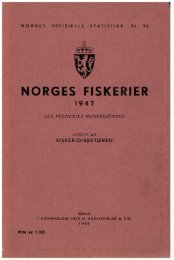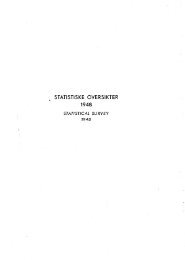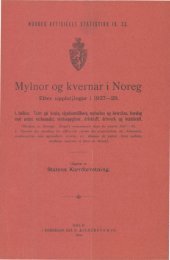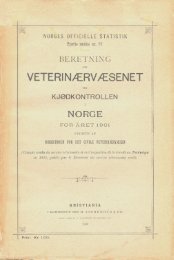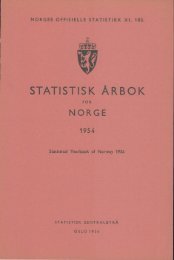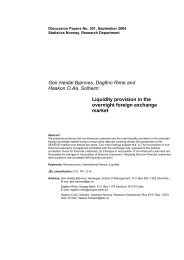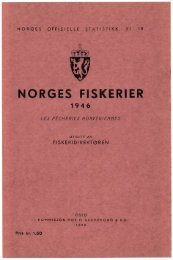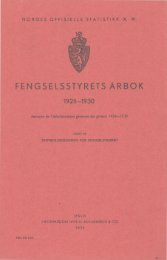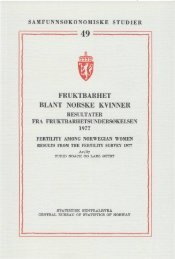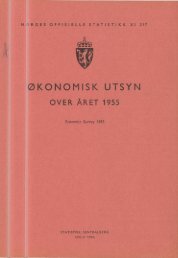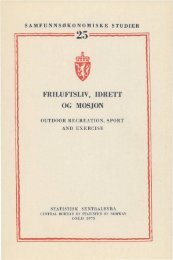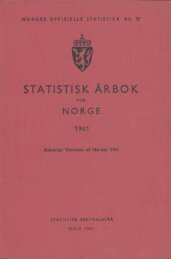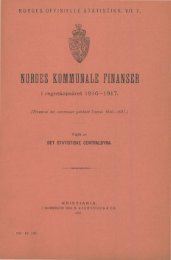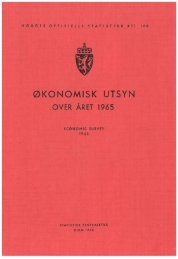Empirical life cycle models of labour supply and - Statistisk sentralbyrå
Empirical life cycle models of labour supply and - Statistisk sentralbyrå
Empirical life cycle models of labour supply and - Statistisk sentralbyrå
You also want an ePaper? Increase the reach of your titles
YUMPU automatically turns print PDFs into web optimized ePapers that Google loves.
<strong>Empirical</strong> Life Cycle Models Social <strong>and</strong> Economic Studies 91<br />
Section 3.5.1 discusses the estimation procedure in more details.<br />
3.4 A Particular <strong>Empirical</strong> Specification<br />
In what follows we assume that the monotonic transformation function G is<br />
given by<br />
ufk — 1<br />
(127) G=<br />
<strong>and</strong> that (within-period) preferences are <strong>of</strong> the Box-Cox type<br />
(128)<br />
(Z ik-{- zor - 1 fik<br />
Lw • - 1<br />
Uk=ik + Rk mt k<br />
where subscript i denotes household <strong>and</strong> 0, a, 7 <strong>and</strong> w are unknown coefficients.<br />
If e = 1, the coefficients 7 <strong>and</strong> w determine the intertemporal substitution<br />
elasticities 1/(7 - 1) <strong>and</strong> 1/(w - 1), which measure the percentage change in the<br />
consumption <strong>of</strong> leisure in any two periods in response to a percentage change in<br />
the relative wage rate for those periods, cf. Heckman <strong>and</strong> MaCurdy (1980). The<br />
interpretation <strong>of</strong> a is less straightforward, since /3 0, implying that Z is not<br />
an ordinary physical good.<br />
If the within-period utilities are to be strictly concave, a, 7 <strong>and</strong> w must all be<br />
less than one. Since the cash flow related to the purchases <strong>of</strong> durables <strong>and</strong><br />
non-durables, as well as the parameter 8p, are allowed to be negative, Z can be<br />
negative. If zo is zero <strong>and</strong> Z is negative, the (Box-Cox) utility <strong>of</strong> Z is undefined;<br />
in order to avoid this problem, we introduce the parameter zo. Notice also that<br />
since sp is unknown, the smallest value <strong>of</strong> Yt -F 6pDt_ 1 can not be observed, <strong>and</strong><br />
we (must) treat zo as a parameter to be estimated.<br />
It is also assumed that the person- <strong>and</strong> age-specific modifiers <strong>of</strong> tastes, rik <strong>and</strong><br />
can be related to a vector <strong>of</strong> exogenous <strong>and</strong> observable consumer<br />
characteristics, Xik <strong>and</strong> Bik, <strong>and</strong> unmeasured characteristics, Eik <strong>and</strong><br />
according to Fik = exp(XikOx -F eik) <strong>and</strong> Qik = exp(BikOb riik). The error<br />
terms are needed since the econometrician cannot observe all components that<br />
influence preferences.<br />
The first order conditions for consumption <strong>and</strong> female <strong>and</strong> male leisure become<br />
(129) U21-1- (Zit -I- 4) 1 = AitPt,<br />
(130) uPt—' rit qi-t 1 = Aitmfitf it<br />
<strong>and</strong><br />
(131) QitLrn-it1 = Aitimmit amit.<br />
82<br />
1



